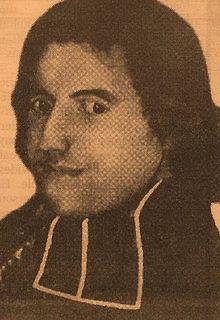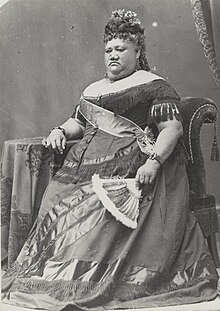Portal:Hawaii
The Hawaii Portal Hawaii (/həˈwaɪ.i/ hə-WY-ee; Hawaiian: Hawaiʻi [həˈvɐjʔi, həˈwɐjʔi]) is an island state of the United States, in the Pacific Ocean about 2,000 miles (3,200 km) southwest of the U.S. mainland. It is the only state not on the North American mainland, the only state that is an archipelago, and the only state in the tropics. Hawaii consists of 137 volcanic islands that comprise almost the entire Hawaiian archipelago (the exception, which is outside the state, is Midway Atoll). Spanning 1,500 miles (2,400 km), the state is physiographically and ethnologically part of the Polynesian subregion of Oceania. Hawaii's ocean coastline is consequently the fourth-longest in the U.S., at about 750 miles (1,210 km). The eight main islands, from northwest to southeast, are Niʻihau, Kauaʻi, Oʻahu, Molokaʻi, Lānaʻi, Kahoʻolawe, Maui, and Hawaiʻi, after which the state is named; the latter is often called the "Big Island" or "Hawaii Island" to avoid confusion with the state or archipelago. The uninhabited Northwestern Hawaiian Islands make up most of the Papahānaumokuākea Marine National Monument, the largest protected area in the U.S. and the fourth-largest in the world. Of the 50 U.S. states, Hawaii is the eighth-smallest in land area and the 11th-least populous; but with 1.4 million residents, it ranks 13th in population density. Two-thirds of Hawaii residents live on O'ahu, home to the state's capital and largest city, Honolulu. Hawaii is among the country's most diverse states, owing to its central location in the Pacific and over two centuries of migration. As one of only six majority-minority states, it has the only Asian American plurality, the largest Buddhist community, and largest proportion of multiracial people in the U.S. Consequently, Hawaii is a unique melting pot of North American and East Asian cultures, in addition to its indigenous Hawaiian heritage. Settled by Polynesians sometime between 1000 and 1200 CE, Hawaii was home to numerous independent chiefdoms. In 1778, British explorer James Cook was the first known non-Polynesian to arrive at the archipelago; early British influence is reflected in the state flag, which bears a Union Jack. An influx of European and American explorers, traders, and whalers soon arrived, leading to the decimation of the once-isolated indigenous community through the introduction of diseases such as syphilis, tuberculosis, smallpox, and measles; the native Hawaiian population declined from between 300,000 and one million to less than 40,000 by 1890. Hawaii became a unified, internationally recognized kingdom in 1810, remaining independent until American and European businessmen overthrew the monarchy in 1893; this led to annexation by the U.S. in 1898. As a strategically valuable U.S. territory, Hawaii was attacked by Japan on December 7, 1941, which brought it global and historical significance, and contributed to America's entry into World War II. Hawaii is the most recent state to join the union, on August 21, 1959. In 1993, the U.S. government formally apologized for its role in the overthrow of Hawaii's government, which had spurred the Hawaiian sovereignty movement and has led to ongoing efforts to obtain redress for the indigenous population. (Full article...) This is a Featured article, which represents some of the best content on English Wikipedia..
 Alexis Bachelot, SS.CC., (born Jean-Augustin Bachelot; 22 February 1796 – 5 December 1837) was a Catholic priest best known for his tenure as the first Prefect Apostolic of the Sandwich Islands. In that role, he led the first permanent Catholic mission to the Kingdom of Hawaii. Bachelot was raised in France, where he attended the Irish College in Paris, and was ordained a priest in 1820. He led the first Catholic mission to Hawaii, arriving in 1827. Although he had expected the approval of then Hawaiian King Kamehameha II, he learned upon arrival that Kamehameha II had died and a new government that was hostile towards Catholic missionaries had been installed. Bachelot, however, was able to convert a small group of Hawaiians and quietly minister to them for four years before being deported in 1831 on the orders of Kaʻahumanu, the Kuhina Nui (a position similar to queen regent) of Hawaii. Bachelot then traveled to California, where he served as an assistant minister while pastoring and teaching. In 1837, having learned of Queen Kaʻahumanu's death and King Kamehameha III's willingness to allow Catholic priests on the island, Bachelot returned to Hawaii, intending to continue his missionary work. However, by Bachelot's arrival, Kamehameha III had again changed his mind and Bachelot was removed from the island and confined to a ship for several months. He was freed only after the French and British navies imposed a naval blockade on the Honolulu harbor. Although he was later able to secure passage on a ship to Micronesia, he died en route and was buried on an islet near Pohnpei. His treatment in Hawaii prompted the government of France to dispatch a frigate to the island; the resulting intervention is known as the French Incident and led to the emancipation of Catholics in Hawaii. (Full article...)This is a Good article, an article that meets a core set of high editorial standards.
Wilhelmine Kekelaokalaninui Widemann Dowsett (March 28, 1861 – December 10, 1929) was a Native Hawaiian suffragist who helped organize the National Women's Equal Suffrage Association of Hawaii, the first women's suffrage club in the Territory of Hawaii in 1912. She actively campaigned for the rights of the women of Hawaii to vote prior to the passage of the Nineteenth Amendment to the United States Constitution in 1920. (Full article...) Selected Picture -'Ōlelo (Language) -This section is here to highlight some of the most common words of the Hawaiian Language, ʻŌlelo, that are used in everyday conversation amongst locals.
ʻOno
Delicious, tasty, savory; to relish, crave; deliciousness, flavor, savor
State Facts
State Symbols:
Selected article -Ruth Ke‘elikōlani, or sometimes written as Luka Ke‘elikōlani, also known as Ruth Ke‘elikōlani Keanolani Kanāhoahoa or Ruth Keanolani Kanāhoahoa Ke‘elikōlani (June 17, 1826 – May 24, 1883), was a member of the House of Kamehameha who served as Governor of the Island of Hawaiʻi and for a period, was the largest and wealthiest landowner in the Hawaiian Islands. Keʻelikōlani's genealogy is controversial. Her mother's identity has never been in question but her grandfather Pauli Kaōleiokū's relationship to Kamehameha I is heavily disputed. While her father has been legally identified as early as 1864, disputes to that lineage continued as late as 1919. As one of the primary heirs to the Kamehameha family, Ruth became landholder of much of what would become the Bernice Pauahi Bishop Estate, funding the Kamehameha Schools. Her name Keʻelikōlani means leaf bud of heaven. (Full article...)Did you know? -
Hawaii News
Wikinews Hawaii portal
Quotes -"Hawaiʻi loa kū like kākou kū paʻa me ka lokahi e kū kala me ka wiwoʻole. ʻOnipaʻa kākou, ʻonipaʻa kākou, a lanakila nā kini e. E ola, e ola, e ola nā kini e." — Dennis Pavao On this day...There are no anniversaries listed for this day. Related portalsTopicsCategoriesAssociated WikimediaThe following Wikimedia Foundation sister projects provide more on this subject:
SourcesDiscover Wikipedia using portals |


























